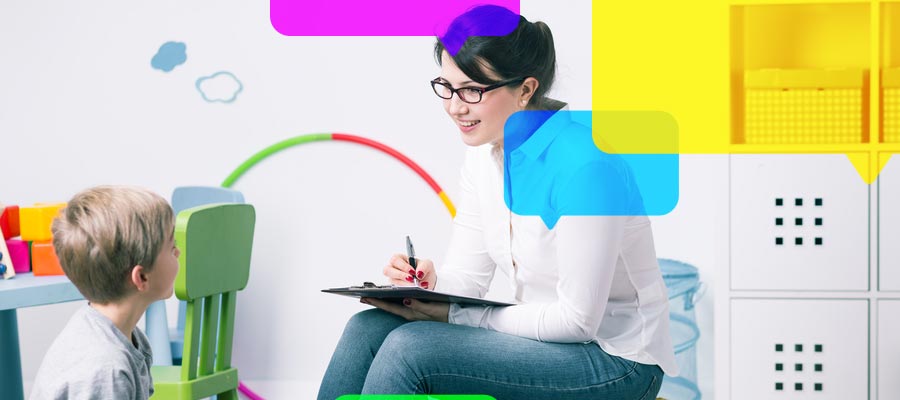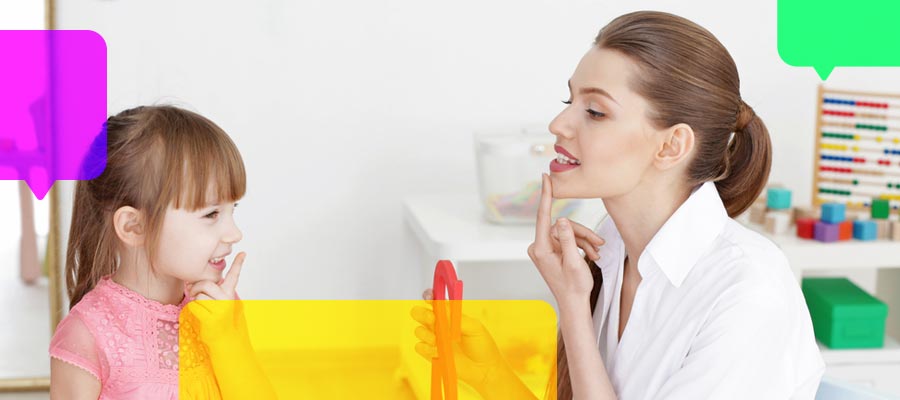We offer the following services for children
Expressive / Receptive Language Delays
Children with receptive/expressive language delays may have difficulty understanding or communicating with others. Therapy concentrates on good language skills which help with learning, behavior, self-esteem and social skills
Phonological Disorders
A phonological process disorder involves patterns of sound errors. For example, substituting all sounds made in the back of the mouth like “k” and “g” for those in the front of the mouth like “t” and “d” (saying “tup” for “cup” or “das” for “gas”). Therapy aims to reduce errors in production of sound patterns.
Evaluation and Treatment
EVALUATIONS
Initially, you will be asked to provide as much information as possible including birth history, diagnosis, medical history, developmental milestones, and other relevant family history. Evaluations conducted may be informal (language sampling, oral motor exam, parental interview, observation, play) or formal (standardized), depending on the concerns expressed during the initial interview.
Length of testing ranges from 1-2 hours with follow-up testing provided as needed.
THERAPY SESSIONS
Your child’s treatment plan is based on the results of his/her evaluation. We provide therapy that is fun, comprehensive, structured, effective and individualized to each child’s personality and needs. A variety of techniques are used so your child has the best chance to make substantial progress in his/her speech and language goals.
We try to incorporate therapy techniques into activities of daily living so your child is able to directly relate the therapies into practice at home. Parents are welcome to be present during therapy. In cases where it is not ideal for the parents to be present, we will provide ongoing consultation on the progress made.
Sessions are typically 30-50 minutes.
The duration of therapy greatly depends on your child’s speech and language goals. A child with minor articulation or clarity disorders may only need therapy for 12 months or less, whereas a child with more severe issues and other complicating factors may require therapy for many years.
The following all impact your child’s overall progress:
- Severity of the disorder
- Child’s personality
- Family involvement
- Carryover
- Home practice
- Duration/frequency of therapy
Milestones
Between One and Two
- Understand “no”
- Uses 10-20 words, including names
- Waves goodbye and plays patacake
Between Two and Three
- Asks “what’s that?”
- Uses two word negative phrases such as “no want”.
- Has a 450 word vocabulary
Between Three and Four
- Can tell a story
- Has a sentence length of 4-5 words
- Has a vocabulary of nearly 1000 words
Between Four and Five
- Has sentence length of 4-5 words
- Uses past tense correctly
- Has vocabulary of nearly 1500 words
Between Five and Six
- Has a sentence length of 5-6 words
- Has a vocabulary of around 2000 words
- Defines objects by their use and what they are made of



